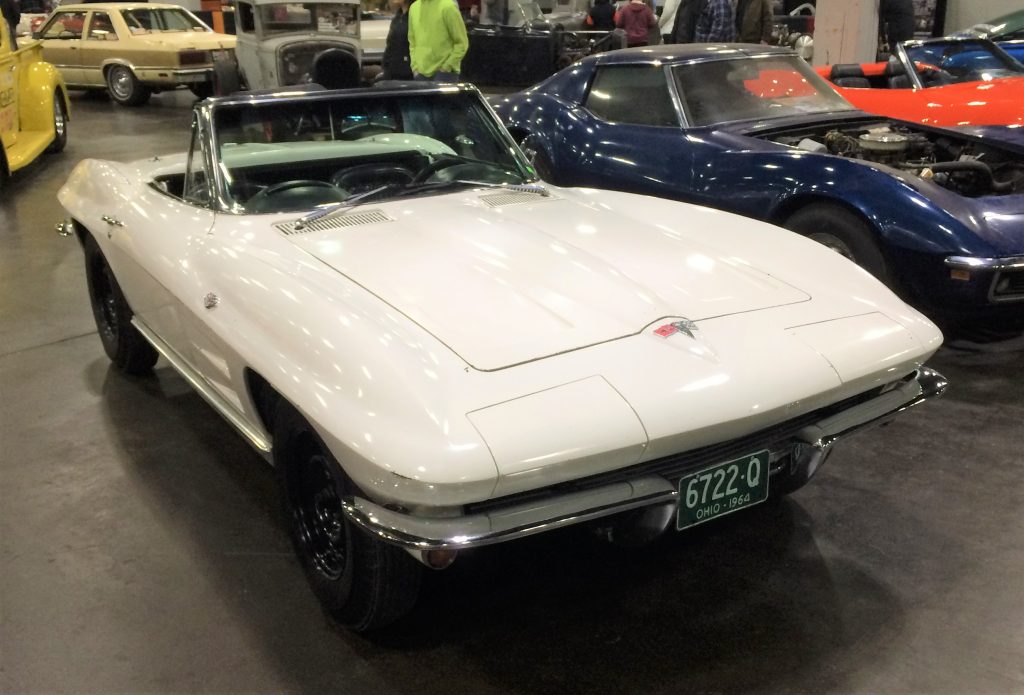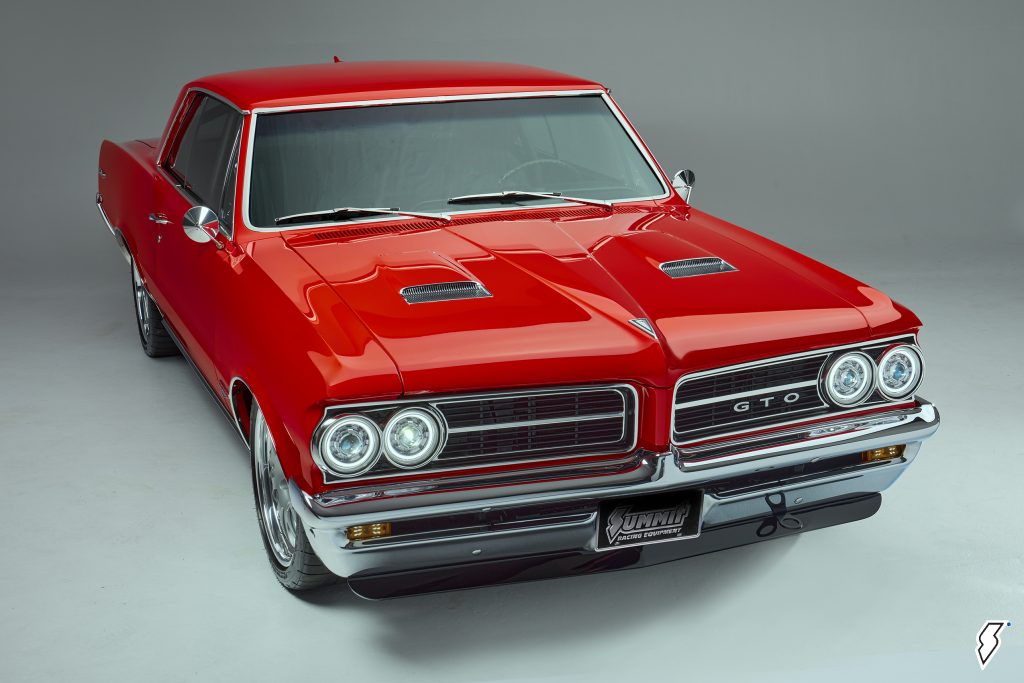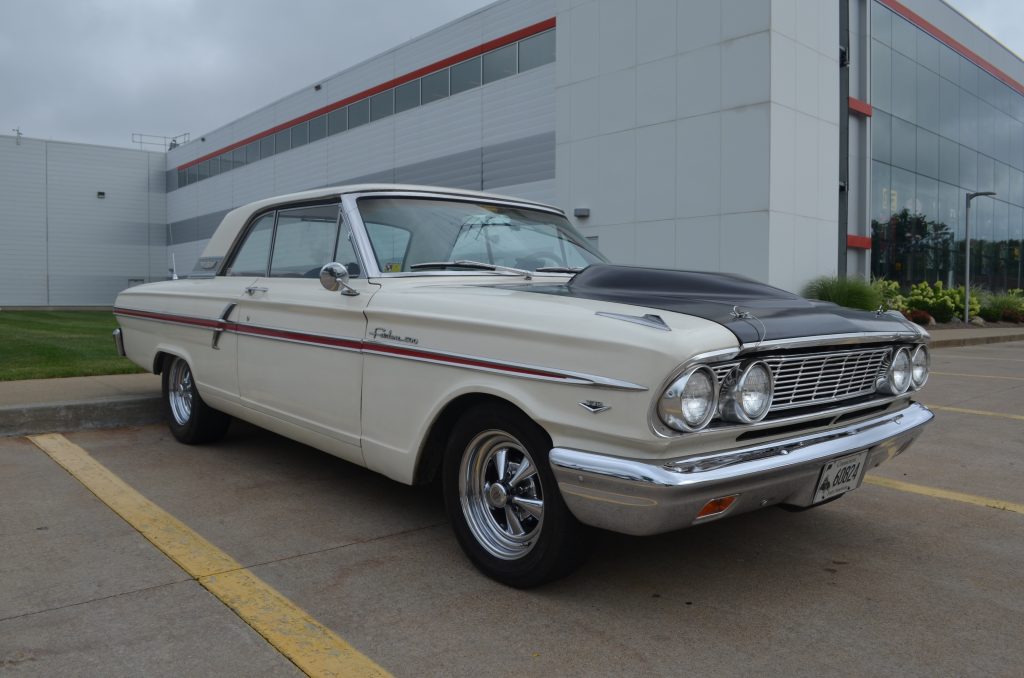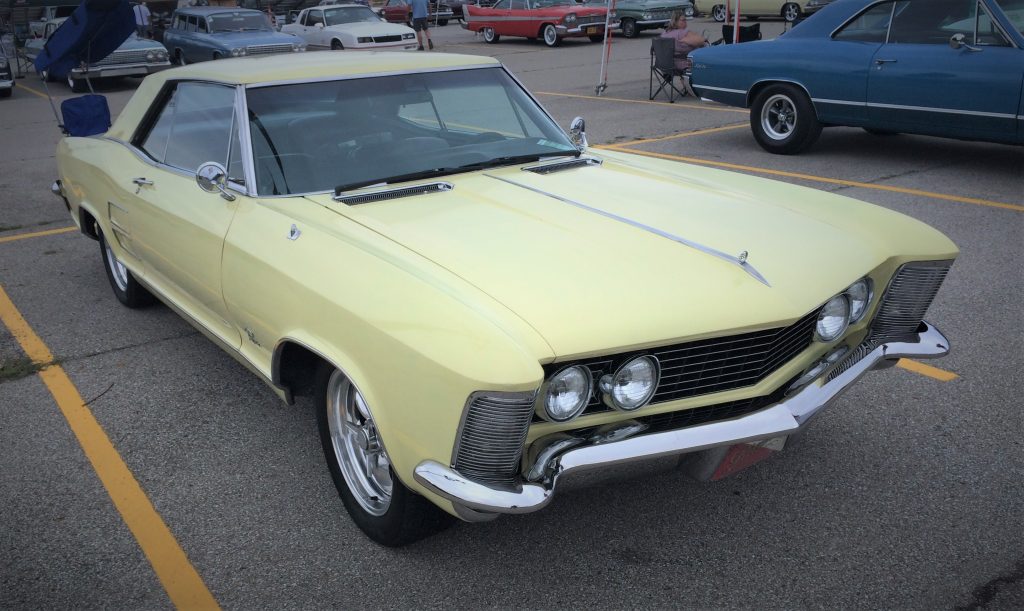What is the best year ever for cars and why?
We put that question to the performance-minded people on Summit Racing’s Facebook page. Using their answers as a foundation, we’ve compiled a list of the Top 8 years in automotive hot rodding and performance history. Why? Because it’s fun to make lists. And it’s even more fun to attempt the impossible–like narrowing 100-plus years of automobiles down to the eight best.
We’ll unveil the list over the next week or so. In order the make the list, a given year must have been nominated at least once by the readers.

1964: The Year of the Muscle Car
The year 1964 is widely regarded as the beginning of the muscle car era.
While some will debate that fact, pointing to cars like the Dodge Max Wedges and 409-powered Chevrolets as earlier examples of muscle cars, it’s tough to debate the significance of 1964 in the history of hot rodding. The year brought us some of the best examples of American performance vehicles and, at the very least, propelled the muscle car movement into high gear.
Let’s start with the Pontiac GTO.

Credited by many as the first true muscle car, the Pontiac GTO was actually an option package for the Pontiac Tempest. While V8 engines had been around for decades, the 1964 GTO combined a midsize body platform (the A-body) with a powerful 389-cubic-inch V8, aggressive-looking hood scoops, throaty dual exhaust, sporty trim—and an affordable price, too! What’s not to like? America fell in love with this recipe for performance, and future muscle cars would follow a similar blueprint with bigger and more powerful engines.
Using that same A-body platform and street performance formula, General Motors unleashed other notable vehicles in 1964 as well. Oldsmobile launched the Cutlass model, including the 442 package. The Oldsmobile 442, which denoted 4-barrel carburetor, 4-speed transmission, and dual exhaust, featured Oldsmobile’s new cast-iron Rocket 330 and distinctive dual-snorkel air cleaner. The 442 remains one of Oldsmobile’s most popular vehicles at today’s car shows.
The Chevrolet Chevelle is arguably one of the baddest muscle cars of all time. The Chevelle SS396 and SS454 (LS5 and LS6) models would absolutely terrorize the streets in the late 1960s and early 1970s. But it all started in 1964, when Chevrolet introduced the Chevelle as its entry into the midsize market. It was originally available with a 283-cubic-inch engine, but by midyear the Chevelle SS would be available with a 300-horse 327. From there, the engines would only get bigger—and the Chevelle would only become more popular with performance enthusiasts.
In Chevrolet’s lineup, the Chevelle was situated a level above Chevy’s compact: the Chevy II. Introduced in 1962 to compete against the Falcons and Darts of the world, the Chevy II received its first V8 engine option in 1964. That update made people take notice of the Chevy II/Nova as a performance vehicle, and the V8 power made it one of the first pony cars. Unfortunately for Chevrolet, another “pony car” stole most of its thunder.

Over at Ford Motor Company, engineers, led by Lee Iacocca, also combined a smaller vehicle with V8 power. In April 1964, they introduced the Ford Mustang and the rest is history. Available with 260-cubic-inch V8 or a Hi-Po engine that produced 271 horsepower, the Mustang is credited as the original pony car. Over the years, the Mustang would come with larger engine options, inspire potent option packages like the Boss 302 and 429, and become an American icon.
Other cars introduced in 1964 included:
- The Plymouth Barracuda: introduced on April 1—two weeks before the Ford Mustang—the Barracuda actually beat the Mustang to the pony car punch.
- The Buick Skylark: previously a submodel of other vehicles, including the Roadmaster and Special, the Skylark became its own model in 1964 and morphed into a popular Buick muscle car.
- Ford Fairlane Thunderbolt: one of our favorite performance vehicles of all time, the Fairlane took Ford’s largest V8 engine and shoehorned it into the midsize Fairlane body. Extremely lightweight and scary fast, the Thunderbolt was also very rare—only around 100 were made.

Introducing the Elephant
While the Mopar group didn’t make huge news with its street performance lineup, it did make big news on the track. The company introduced the legendary 426 (Gen II) HEMI as a race-only engine in 1964. The engine was so dominant in its debut that NASCAR changed its rules for engines, eliminating the use of limited-production, race-only engines and requiring all engines to be available in production vehicles.
Two years after its NASCAR ban, Chrysler introduced a street version of the HEMI for its B-body vehicles, and the legendary Elephant (nicknamed so for its size) would stampede the competition until it was discontinued in 1971. You recently named the 426 HEMI as your #2 engine of all time.
What else did we miss from 1964? Tell us in the comments section below.

You pretty much got it. One request, Check out V6 engines and see what comes up. I have one now (Ford) and I’m looking for anything related.
The definition of a Muscle car is sticking a high power engine into a mid size car! if this is the case then the 1948 Olds Super 88 was the first muscle car! if not that one then how about the 1957 Rambler Rebel its tested performance was only second to the 1957 Corvett!
The 1964 GTO was the most promoted muscle car but it wa snot the first!
the studebaker R engines in the lark or avanti could lick the hide off them all
My 1955 Studebaker was blowing the doors off of the 64 and 65 GMs and Fords before I finally crashed it. 327s, 289s, 390s, 273s and 318s it did not matter! Those boys really knew how to build an engine!!
Growing up in the 60s (I got my license at 16 years old in 1967) I recall all those vehicles you noted and as a very young “Tow Truck Driver” (best job I ever had that is truly enjoyed), I recall towing many of those from either breakdowns or drag racing (street) mishaps. I recently picked up (still doing the motorhead stuff) a 1964 Oldsmobile F85 Deluxe, V8 330. Not a “Muscle Car”, but part of the “64 Family”. Can’t wait to do some cruising in her and just reminisce. Great article, enjoyed it.